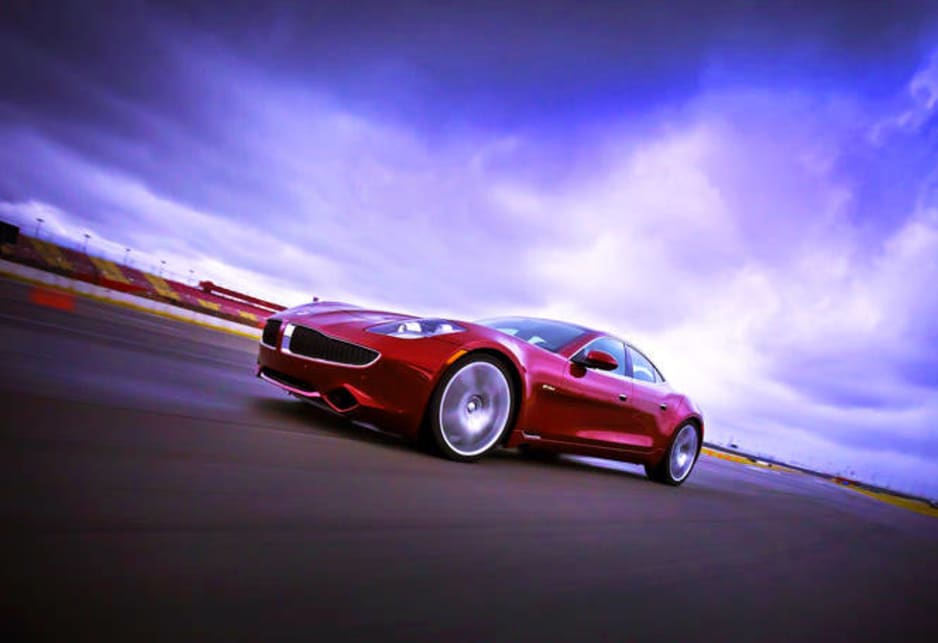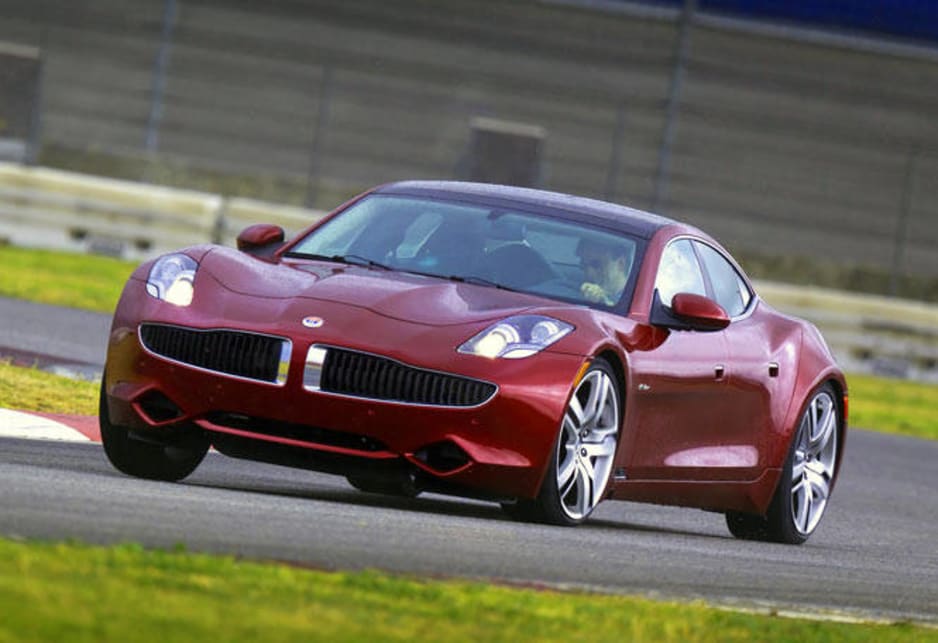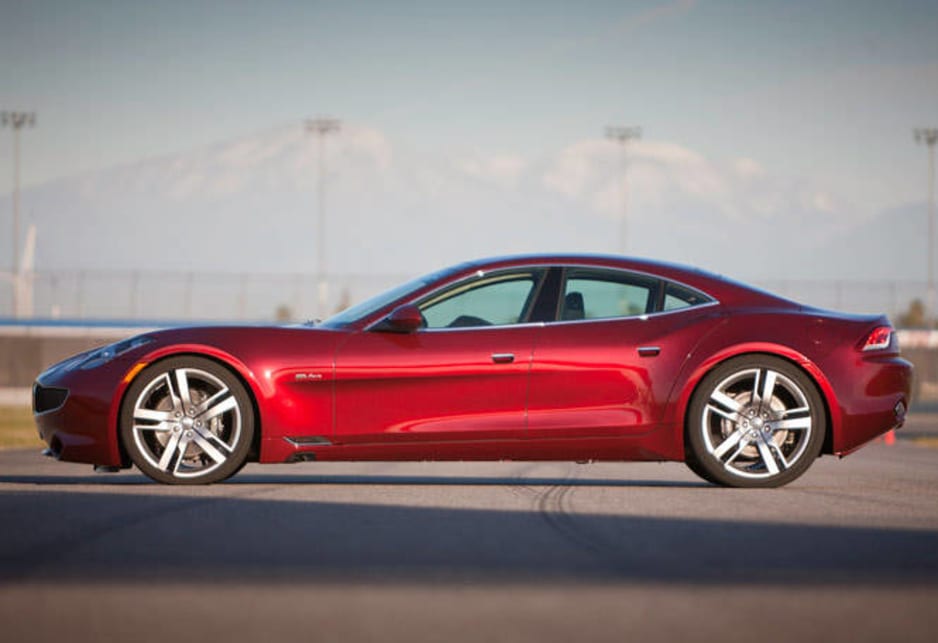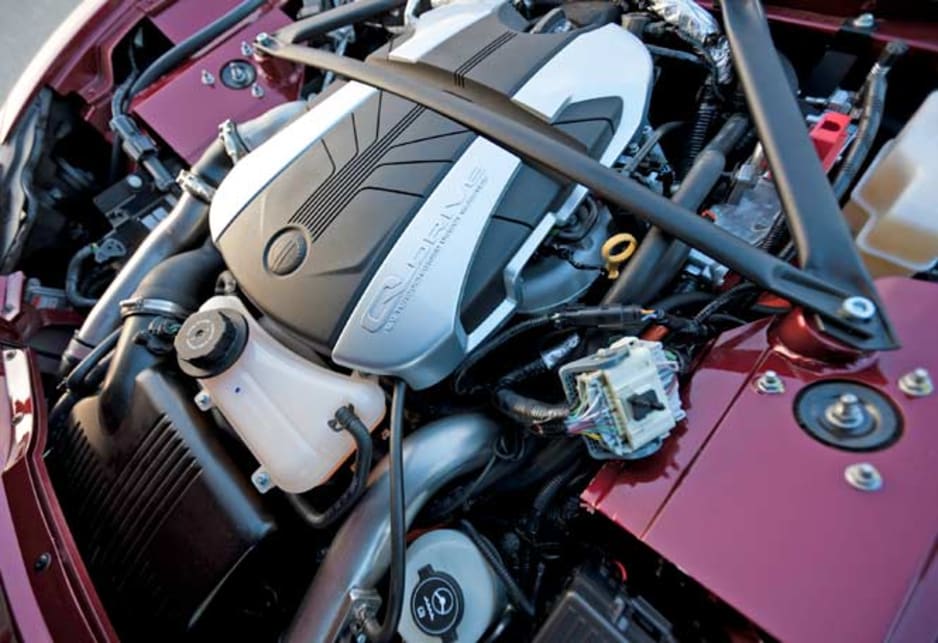
Fisker Karma 2011 Review
If Henrik Fisker has his way, the car of choice for Hollywood's environmentally conscious stars will be his new electric car. So what about the Toyota Priuspopular with the likes of George Clooney and Julia Roberts? Nah, too run-of-the-mill. And the Chevy Volt? Not enough style.
Enter the all-new Fisker Karma, the world's first true electric vehicle with extended range. And crikey, does this multi-talented youngster find itself in a unique position.
The brand new American limo not only boasts Mercedes-level luxury and BMW-like handling wrapped in a sleek exterior worthy of a Maserati badge, but delivers some of the greenest credentials around.
Packing a 300kW punch, this 4-seater, 4-door sedan generates cleaner C02 emissions and better mileage than a Prius. And we're in sunny Southern California to drive the first editions.
So how did this potential game-changer come about? In 2005, Danish-born company CEO Henrik Fisker and business partner Bernhard Koehler started rebuilding Mercedes and BMWs convertibles at Fisker Coachbuild until a chance meeting with Quantum Technologies changed everything. The alternative energy company had been contracted by the government to develop a "stealth" vehicle for the U.S. military that could be dropped behind enemy lines, move forward in electric-only "stealth mode," and then retreat by using an engine.
But before we get ahead of ourselves, we need to point out that Fisker doesn't just head up the company as its CEO. He also happens to be chief designer as well. And when you consider that his previous jobs included penning the Aston Martin DB9, V8 Vantage and the BMW Z8, then it's easy to see where the Karma's European-inspired design flare comes from. With definite designs hints from Aston Martin and Maserati, first impressions are that this car just might be the most beautiful-looking sedan penned on American soil since the 70s.
The sheet metal however, is just the icing on the cake. What sits on the Karma's bespoke aluminium spaceframe chassis pushes the envelope of EV drivetrains. Co-developed with Quantum Technologies, the car employs that military stealth vehicle-inspired powertrain we mentioned above: twin, rear-mounted 150-kW electric motors and a lithium-ion battery pack. After the battery charge is depleted, some 80kms later, a GM-built 4-cylinder 255hp 2.0 litre turbocharged petrol engine engages to drive a generator that recharges the batteries. Fisker's patented "EVer" (EV extended range) setup guarantees up to 80km EV-only range and around 400 kms with the engine, totaling over 480kms range extended capability.
Out on the track, it soon became obvious that Fisker's team means business. Press the start button, select D from the small PRNDL pyramid on the centre console, and the car puts you into its default "Stealth" or EV-only mode. You have the option of flicking a paddle to select "Sport" and engage the engine for a boost in power, but more on that later.
As we taxied out onto the course at around 30km/h, we noticed (like the Nissan Leaf) that Fisker has fitted an artificial sound to warn pedestrians of the Karma's presence. Cool. Then we floored the throttle. 100% of the available torque on tap, instantly. That's 1330 Nm of torque, a figure only eclipsed by the mighty Bugatti Veyron. It's not explosive acceleration, but it's fast enough to please most drivers. Even though the Karma has an unsubstantiated curb weight of 2 tons, it will sprint from zero to 100km/h is 7.9 seconds and reach a top speed of 155 km/h (in Stealth mode).
It only took one lap of the special street course to establish that the Karma handles like a damn capable sports car. The double wishbone suspension with its forged aluminium arms and self-levelling rear dampers help rank the Fisker EV at the top of its class for on-road manners. Turn-in is sharp and precise with well-weighted steering and almost no understeer at the limit.
The car's super long 3.16m wheelbase, wide front and rear tracks, low centre of gravity and huge 22-inch Goodyear Eagle F1 tyres all combine nicely to keep the Karma flat through the corners while generating minimal nose-dive under full braking. Type grip is substantial but the rear will slide and its easy to catch. Oh, yeah and its 47/53 front-rear weight bias doesn't hurt that handling equation either.
The only issue we had was with sound. Wind and road noise suppression are well executed. In fact, they are so well isolated that you can hear sounds coming from the bodywork as the car flexes under cornering. Now, the fact that we are also cruising in silent Stealth mode only seems to compound those sounds, until, that is, we flick the steering wheel mounted paddle from Stealth to Sport mode. All of a sudden, the silence is broken by an engine that springs to life with a rather loud and raspy exhaust note delive red through pipes positioned just behind the front wheels.
The first thing you notice, apart from the audible exhaust note and the turbo whistle, is the extra power. Powered by the engine, the generator not only recharges the battery but lifts the lithium-ion pack's performance which in turn boosts acceleration by a noticeable 20-25%. That switch to Sport now allows the car to sprint from zero to 100km/h in 5.9 seconds while elevating top speed to 200 km/h.
A 6-piston Brembo brake setup with 4-pistons up the back, pulls up admirably and resists fade. Brake pedal rigidity is firm and progressive while squeezing the right paddle allows you to engage Hill mode and select between three levels of regenerative braking, a feature that simulates the effects of downshifting.
A $529 million injection from the Department of Energy allowed him to purchase GM's former Delaware plant where the next car will be made, the lower-priced and smaller Nina. It will also allow Fisker to expand his 'responsible luxury' theme that has seen this green company use timber reclaimed from California forest fires and Michigan lake bottoms, as well as blemished leather.
Yet another first is the Fisker Command Center in the center console. It features a huge 10.2-inch force-feedback touch-screen that centralizes almost every vehicle control. And its easy to use. In addition, the Command Center can display power flow including energy gain from the solar panel roof which can generate enough power to drive the car 300 kms over a year.
Built alongside Porsche Caymans in Finland, the Karma might only be three years old, but the signs are bright for sure. Made only in left-hand-drive, Fisker's first model will not see our shores. We'll have to wait for his next EV, the smaller Nina, which is expected around 2013. Our brief drive convinced us that the Karma has a lot in its favour, starting with those drop-dead good looks, unique expert engineering, superb handling and a green powertrain that sets new standards for CO2 emissions and mileage. The audible interior creaks and loud exhaust note will need to be addressed but should be solved in the very near future.
The fact that over 3,000 orders have already been taken for this US$96,850 (base price) car hint at a potential market that could see customers ranging from Porsche and Mercedes cross-shoppers to green driving enthusiasts to the likes of Leonardo and Cameron, George and Julia and Brad and Tom. Hmmm, wonder who's going to be the first one to roll up to the red carpet on Academy night in Stealth mode.











